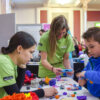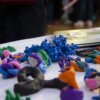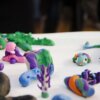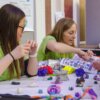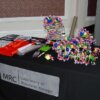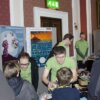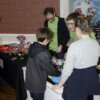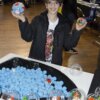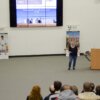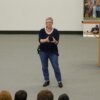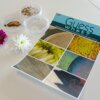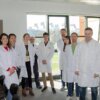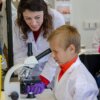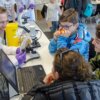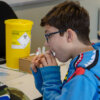LMB scientists have been talking with members of the public and contributing to the 25th annual Cambridge Science Festival with family-friendly hands-on activities and a fascinating talk.
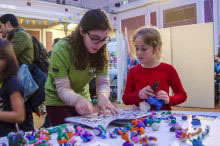
Synthetic Biology: create a new protein!
On the first Saturday of the Festival, LMB scientists gave visitors to the “Hands-on at the Guildhall” event the opportunity to design and create a new model protein using modelling clay and concepts from synthetic biology. While making their new proteins in a large variety of shapes and arrangements, the children were encouraged to think about what their new protein might be designed to do and learned about how synthetic biology is changing our lives with the development of new biofuels, medicines, and laundry detergent.
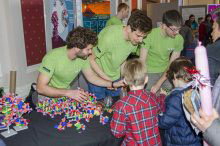
A Recipe for Primordial Life
At the “Hands-on at the Guildhall” event on the Sunday, LMB researchers were showcasing a newly developed set of activities in which visitors could go back in time to the early Earth to find out how life began. From there they could discover the recipes behind life’s chemical building blocks and delve into the primordial soup to see how the first cells were assembled. This activity included a tablet-based chemistry game and reaching down into a “pond” to fish out some of the components of the first cells.
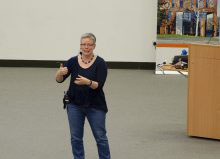
Policing your proteins: how cells enforce quality control
Liz Miller gave an evening talk about her research at the Cambridge Academy for Science and Technology (CAST) on Tuesday 19th March. Her talk focused on her group’s research into the quality control used by cells to ensure that their protein machinery is correctly assembled. Only if it passes this control is the machinery then sent to its destination to begin work.
Liz described how the most common cause of cystic fibrosis is the loss of a single specific amino acid from the chloride channel CFTR, resulting in misfolding of this protein. Using the same yeast that is utilised by bakers and brewers, Liz’s group have been able to dissect and understand the mechanisms involved in trafficking of a yeast version of CFTR to the cell membrane in order to understand how an amino acid deletion leads to disease.
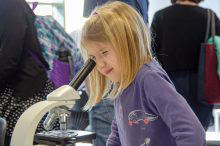
See Your Cells
The last Sunday of the Festival saw a number of events taking place across the Cambridge Biomedical Campus, including LMB scientists giving visitors to CAST the opportunity to see their own cheek cells under the microscope. Just by taking a simple cheek swab and a small drop of a dye, visitors could spot individual cells, identify their nuclei, and in some cases see tiny bacteria on top of their cheek cells. There was also a stereomicroscope detective challenge where they had to identify microscopic images of beetles, butterflies, fruit flies and flowers.
For many, it was not only their first time seeing their own cells, but also their first time using a microscope and their enjoyment in seeing the hidden beauty of biology was clear. Over 100 visitors and their families got to see their cheek cells and their comments included:
“It was cool to see your own and other people’s cheek cells!”
“Talk to researchers – awesome!!”
“It was like, WOW!!!”
